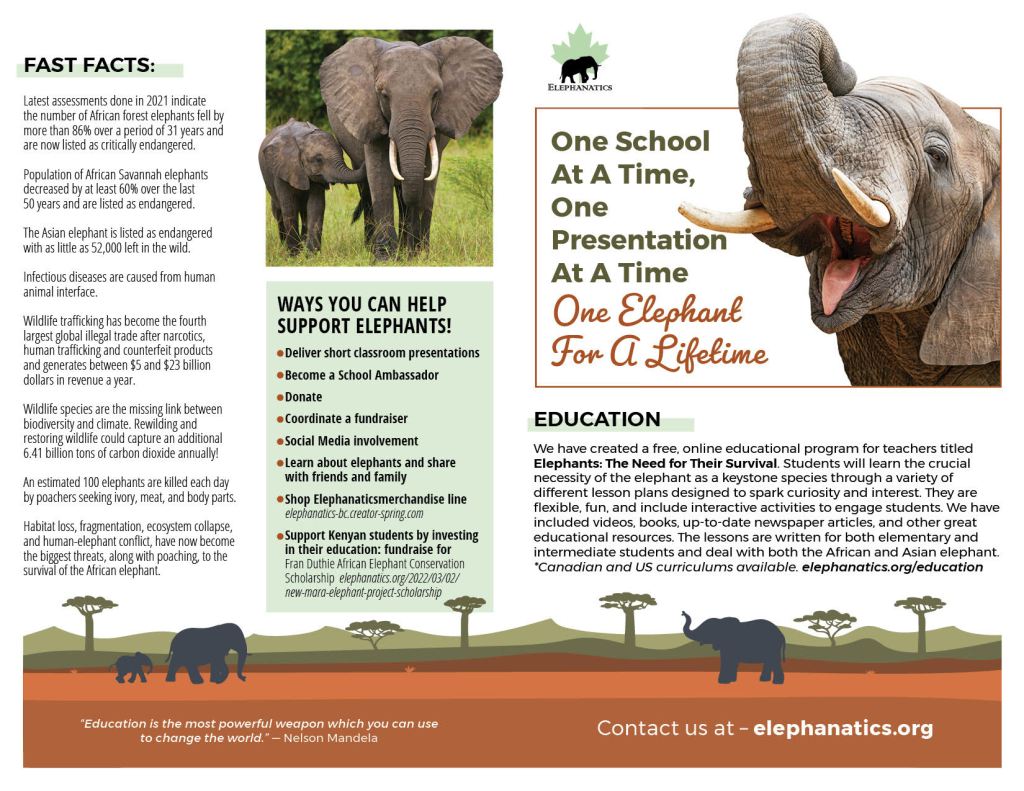What is Rewilding?
Rewilding, or re-wilding, activities are conservation efforts aimed at restoring and protecting natural processes and wilderness areas. This may include providing connectivity between such areas and protecting or reintroducing apex predators and keystone species.
Read more below on conservation work done by Elephanatics’ Dr. Rene Beyers, Director, African Elephant Specialist:
Abstract from Guiding Principles for Rewilding:
Rewilding as an approach to large landscape restoration has been gaining substantial traction. We describe it as the process of restoring native ecosystems, following major human disturbance, to create a complete food web at all trophic levels as a sustainable and resilient ecosystem using biota that would have been present had the disturbance not occurred. Rewilding can be seen on a continuum of ecological restoration towards increased ecosystem integrity and autonomy and reduced human impact and intervention. It is complementary to other conservation approaches, such as protection and community conservation, which so far have failed to stop the continuous decline of species and degradation of nature. Rewilding has an important social dimension, engaging communities in the restoration of “wild” nature and providing hope for healthier ecosystems. The IUCN CEM Task Force on Rewilding consults with a broad community of experts and practitioners and aims to provide IUCN with a clear understanding of rewilding and a link to CEM priority areas. So far, the task force conducted a systematic review of the literature, developed initial guiding principles and performed a survey of rewilding pioneers. Two workshops in the US and Europe were held with academics, advocates, and rewilding practitioners. The workshops highlighted similarities and differences between the two continents in the ecological and human aspects of rewilding. A set of principles emerged as part of an ongoing development.
Continue reading more in link – Guiding Principles for Rewilding
*A BIG Congratulations* to Dr. Rene Beyers and Professor Anthony Sinclair on their recent publication of “A Place Like No Other” by Princeton University Press.
 “A Place Like No Other” is Anthony Sinclair’s firsthand account of how he and other scientists discovered the biological principles that regulate life in the Serengeti and how they rule all of the natural world. Co-authored with Dr. Rene Beyers. A fascinating journey into the lives of so many scientists who have dedicated numerous years to decipher natures extraordinarily complicated Serengeti. A must read for everyone!
“A Place Like No Other” is Anthony Sinclair’s firsthand account of how he and other scientists discovered the biological principles that regulate life in the Serengeti and how they rule all of the natural world. Co-authored with Dr. Rene Beyers. A fascinating journey into the lives of so many scientists who have dedicated numerous years to decipher natures extraordinarily complicated Serengeti. A must read for everyone!
Buy your copy here.
“Migration in the Serengeti is a dominant structuring force of ecosystems called a #keystoneEffect. Migration results in higher populations of animals with the Wildebeest being a #keystoneSpecies regulating every aspect of the Serengeti ecosystem.” #APlaceLikeNoOther
“The speed at which species are disappearing is at least 100 times higher than the natural rate of #extinction. At the current rate it will take millions of years for diversity to be restored to preindustrial levels.” #APlaceLikeNoOther
 Another stellar publication by Dr. Rene Beyers – The Routledge Handbook of Rewilding
Another stellar publication by Dr. Rene Beyers – The Routledge Handbook of Rewilding
- Listen to the Routledge Handbook of Rewilding book launch seminar here.
- TBA – A follow-on podcast series will allow us to explore these topics in more depth.
‘Nature has priority’: Rewilding map showcases nature-led restoration
- Please see our Rewilding Lesson Plan in our Education section – https://elephanatics.org/education/intermediate-lessons/
- Buy our Rewilding t-shirts and help save elephants – https://elephanatics-bc.creator-spring.com/women/men-s-t-shirts
 Elephanatics
Elephanatics















